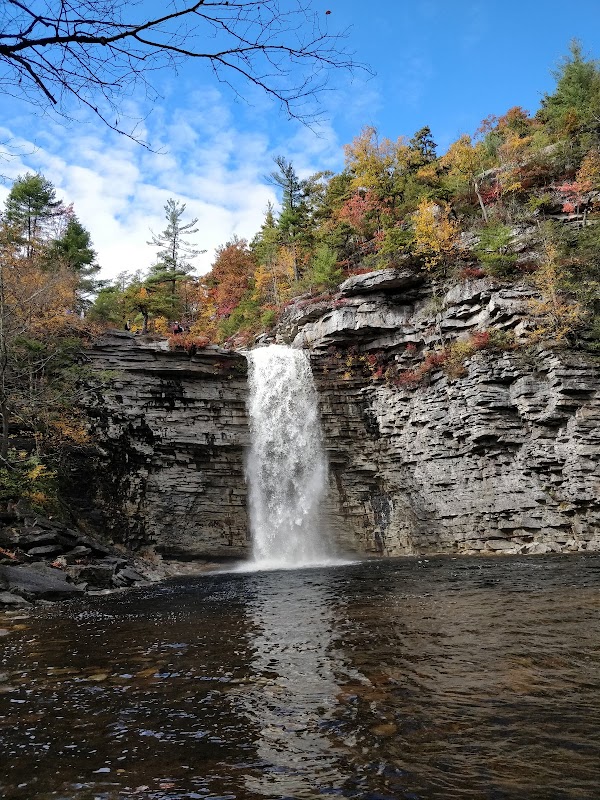
Queens Botanical Garden Seasonal Festivals: Immersive Urban Nature Experiences in Queens, NY
Queens Botanical Garden transforms throughout the year, hosting seasonal festivals that celebrate natural cycles and cultural heritage within an accessible urban oasis. From cherry blossoms to holiday trains, each event offers immersive, practical experiences for visitors eager to engage with nature without leaving the city.
Plan for Comfortable Footwear
The garden’s paths are paved and flat but expect extended walking. Comfortable shoes with good support will enhance your visit.
Bring Hydration
Events happen year-round, some in warmer months. Carry water to stay refreshed during your stroll through the gardens and festival areas.
Check Festival Schedules in Advance
Festivals occur seasonally with specific dates and hours; confirm event details before visiting to maximize your experience.
Prepare for Variable Weather
Queens weather shifts quickly; layers, sun protection, or outerwear depending on season ensure comfort throughout your visit.
Queens Botanical Garden Seasonal Festivals: Immersive Urban Nature Experiences in Queens, NY
Queens Botanical Garden, located in Flushing, Queens, offers a distinct blend of natural beauty and cultural celebration across four seasons. Each festival invites visitors to interact with the garden’s landscapes—its varied flora and intimate habitats—with a sense of adventure grounded in accessible urban greenspace.
Spring awakens the garden with the Cherry Blossom Festival. Walking under the soft pink canopy, you feel the delicate petals pause mid-air, daring you to slow down and breathe. The garden’s pathways are flat, paved, and roughly one mile long—perfect for families and casual explorers. As flower scents mingle with the cool spring breezes, practical considerations emerge: bring a water bottle and comfortable shoes suited for paved surfaces.
Summer ushers in the Mid-Autumn Moon Festival, a vibrant celebration of cultural heritage where paper lanterns and traditional music meet the shade-hungry hostas and towering oaks. The garden’s trees, fiercely standing against the summer heat, provide relief and invitation for long, languid strolls. Temperatures can climb, so protective hats and sunblock are essential; festival activities run from early afternoon to early evening, providing opportunities to enjoy cooler twilight moments amid the blooming native and exotic plants.
Autumn reveals a palette of golds and crimsons during the Fall Harvest Festival. The garden’s vegetable plots and fruit trees bring a purposeful edge to the stroll, connecting visitors to the cycle of growth and sustenance. Ground surfaces are firm, and the terrain remains level, ensuring the festival is accessible to most. Layered clothing is advised as chillier air enters, with crisp winds giving movement to the grasses and cornstalks. Seasonal demonstrations and tastings encourage hands-on participation.
Winter lays a quiet claim with the Holiday Train Show, where miniature trains glide through densely planted evergreen islands that stand stoic against icy winds. The garden's open layout means exposure to cold winds, so warm insulated clothing and gloves are key. The shorter days call for timed visits during late afternoons and early evenings to catch the glow of festive lights. The metallic whistle of the train invites curiosity and wonder, promising engagement within a container of warmth and celebration amid the stark bare branches.
Each festival at Queens Botanical Garden balances a sense of lively engagement with the natural world while maintaining practical accessibility. The garden’s level terrain and clearly marked paths suit all ages and mobility levels, making it a manageable urban adventure regardless of season. Armed with hydration, weather-appropriate attire, and curiosity, visitors can fully engage with the garden’s evolving landscapes and community events, embracing each festival’s promise of discovery and connection.
Nearby Trips
All Adventures
Boat Charters
Water Activities
Adventures near Queens, New York
Discover the unique and memorable adventures that make Queens, New York special.
Frequently Asked Questions
Are the Queens Botanical Garden festivals family-friendly?
Absolutely. The garden provides accessible terrain and engaging activities suitable for all ages, including interactive exhibits and crafts during festivals.
Is there an admission fee for the seasonal festivals?
Admission fees vary by event; some festivals like the Cherry Blossom Festival offer free entry, while others, such as the Holiday Train Show, require tickets. Check the garden's website ahead of visiting.
Can visitors bring pets to the festivals?
Pets are generally not allowed during special events to protect both wildlife and guests. Service animals are permitted with proper documentation.
What transportation options are available to reach Queens Botanical Garden?
The garden is accessible via public transit, including the Long Island Rail Road to Flushing Main Street and several bus lines. Parking is limited, so public transit is recommended.
Are guided tours offered during festivals?
Yes, guided tours highlighting seasonal themes and plant life are commonly scheduled. Advance registration is recommended to secure a spot.
What accessibility accommodations are in place?
All paths in the garden are wheelchair-accessible, with ramps and benches placed along routes. Festival spaces accommodate diverse mobility needs.
Recommended Gear
Comfortable walking shoes
Supportive footwear is needed for navigating paved and walkable garden paths.
Water bottle
Staying hydrated is crucial during warmer festival events.
Layered clothing
Layering allows temperature adjustments, especially in fall when weather fluctuates.
Sun protection (hat, sunscreen)
Protection from UV rays improves comfort during sunny seasonal events.
Local Insights
Hidden Gems
- "The serene Fragrance Walk featuring scent-rich native plants"
- "The Deering Oaks area, a quiet spot with unique plant collections"
Wildlife
- "Seasonal sightings of migrating butterflies in spring"
- "Resident songbirds like chickadees and warblers"
History
"Founded in 1939 as a model garden emphasizing sustainable urban horticulture, it's a living exhibit intertwining ecological education with cultural programming."
